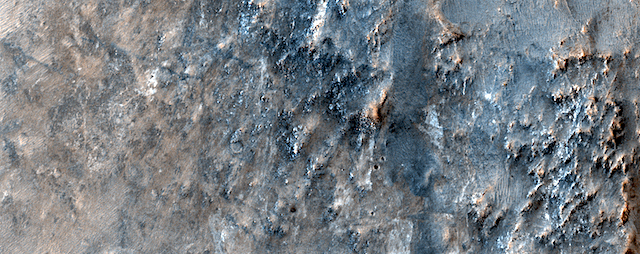 This image of the Nili Fossae region, to the west of the great Isidis basin, shows layered bedrock with many impact craters.
This image of the Nili Fossae region, to the west of the great Isidis basin, shows layered bedrock with many impact craters.
Nili Fossae is one of the most mineralogically important sites on Mars. Remote observations by the infrared spectrometer onboard MRO (called CRISM) suggest the layers in the ancient craters contain clays, carbonates, and iron oxides, perhaps due to hydrothermal alteration of the crust. However, the impact craters have been degraded by many millions of years of erosion so the original sedimentary, impact ejecta, or lava flows are hard to distinguish.
The bright linear features are sand dunes, also known as “transverse aeolian dunes,” because the wind direction is at ninety degrees to their elongated orientation. This shows that the erosion of Nili Fossae continues to the present day with sand-sized particles broken off from the local rocks mobilized within the dunes. [More at link]








